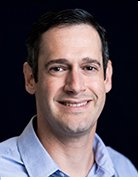How one CIO overcame the challenges of shadow apps
CIO John Rathje explains how he's tackling shadow IT challenges in the recruiting admissions process at Kent State by deploying a data integration tier that supports data movement.
When Kent State University ran into problems with its recruiting admissions process, Vice President for IT and CIO John Rathje decided to investigate how improving its IT infrastructure could help address the bottlenecks. As it turned out, the various teams involved in the admission process had gradually adopted about 60 different shadow apps.
These shadow apps were being used to gather data to better understand applicants and to facilitate communications across various channels. While they helped improve the admissions process at the Kent, Ohio, university, they also created new IT management challenges.
The problem was that these apps were outside of the purview of IT and a lot of errors would occur as data was manually copied between applications. Rathje estimates they were spending an average of 20 minutes cleaning and organizing data for about 6,000 admission applications each. Therefore, he embarked on finding a way to tame the flow of data between these shadow apps and their core ERP and CRM systems, which led to the beginning of a digital transformation initiative that started with building a data integration tier on top of Talend Cloud.
Starting with simple goals
The objective was to "go beyond the graduate application process to support data movement between all systems and our emerging CRM strategy in relationship to other key enterprise systems," Rathje said.
 John Rathje
John Rathje
The other reason for deploying a data integration tier deals with data for UX. "With the emerging world of converged applications, our constituents expect a seamless experience that is responsive to their needs and personalized to their needs as well," Rathje said. A key part of their digital transformation initiative lay in deploying a middleware tier that could manage data movement in and out of key systems to deliver services and information to constituents.
It was important for Rathje to start with a couple of clear goals. The university wanted a platform that could help them understand the flow between their different applications, as well as be able to move data into and out of the various systems. The other goal was to make changes such as introducing new applications, retiring old applications or adding new fields less problematic and with the ability to clean up and provide consistency to data.
Combining data movement and schema
Older middleware simply focused on moving data. Rathje said that one of the key attractions of more modern middleware solutions like Talend is better support for managing data schemas in addition to shuttling data between apps. "Talend acts as our data schema framework for managing that integration and the rules associated with the data movement," he said. This improves the fidelity around moving data and makes it easier to automatically address data quality issues or transform it for other applications.
Kent State University is also in the process of moving all its integrations into one system, which will make it easier to decommission old code and point-to-point integrations. "The solution allows us to have consistency in our approach to moving data, inherently improving data quality, which yields more trustworthy data and helps ensure the right data is available for the right purpose with less effort," Rathje said.







